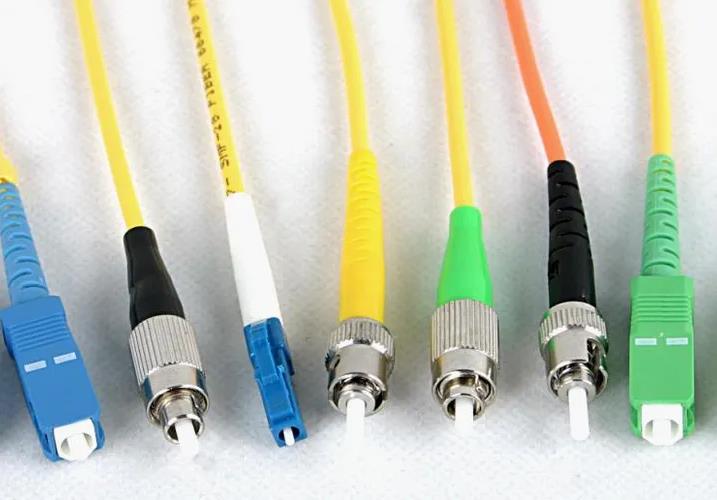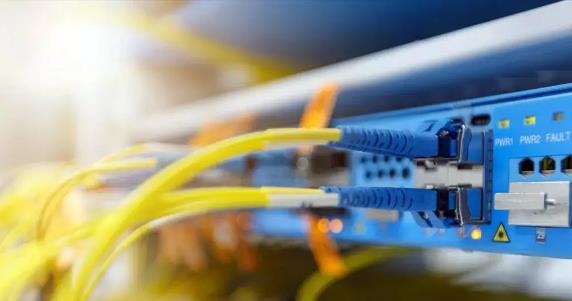
There are many types of patch cords and pigtails. It is worth noting that fiber pigtails and patch cords are not the same concept. The main difference between fiber optic patch cords and fiber optic pigtails is that only one end of the fiber optic pigtail has an active connector, and both ends of the patch cord have active connectors. In simple terms, splitting the patch cord into two can be used as a pigtail.
1. What are jumpers and pigtails?
A jumper is a cable directly connected to a desktop computer or device to facilitate the connection and management of the device. The jumper has a thicker protective layer and is often used between terminal boxes and optical transceivers.
Only one end of the pigtail has a connector, and the other end is an optical fiber connector.
2. the type of fiber jumper
Optical fiber patch cords are divided into single-mode optical fiber patch cords and multi-mode optical fiber patch cords in data transmission equipment. Single-mode optical fiber patch cords are generally yellow, connectors and protective sleeves are blue, the wavelength is 1310nm/1550nm, and the transmission distance is 10km/ 40km, long transmission distance; multimode fiber patch cord: generally orange or lake blue, connector and protective sleeve are beige or black, wavelength is 850nm, transmission distance is 500m, and transmission distance is short.
Optical fiber jumpers can be generally divided into the following types according to the type of connector:
①LC type fiber jumper: square connector, made with easy-to-operate modular jack (RJ) latch mechanism, is a connector for connecting SFP optical modules, and is often used in routers.
②SC type optical fiber jumper: rectangular connector, using plug-in and latch-type fastening method, is a connector for connecting GBIC optical modules, and is often used in routers and switches.
③ST type optical fiber jumper: round head connector, fastened with turnbuckle, commonly used on optical fiber distribution frame.
④FC type optical fiber jumper: circular optical fiber connector, the outside is made of metal material, and it is also fastened with turnbuckles, which is generally used on the ODF side.
⑤MPO type optical fiber jumper: It is composed of two high-precision plastic-molded connectors and optical cables. It adopts miniaturized design, and the connection is stable and reliable with high density.
⑥MTP type fiber jumper: fiber jumper with many cores and small volume, used in high-density integrated fiber line environment.
3. Types of pigtails
Like fiber jumpers, pigtails are divided into single-mode pigtails and multi-mode pigtails according to fiber types. The outer sheath of single-mode pigtails is yellow, the wavelength is 1310nm/1550nm, and the transmission distance can reach 10km/40km. Long-distance connection; the outer sheath of the multi-mode pigtail is orange/lake blue, the wavelength is 850nm, and the transmission distance is 500m, which is used for short-distance connection. The fiber jumpers and pigtails provided by ETU-LINK have Various types to choose from.
Pigtails can be generally divided into the following types according to the type of connector:
①LC type pigtail connector: The size of the pin and sleeve of the LC type pigtail connector is half of the above two connectors, which improves the space utilization of the optical distribution frame. It adopts a modular jack that is easy to operate. (RJ) Latch principle made.
②SC type pigtail connector: It is made of engineering plastic material, which is cheap. The outer shell is rectangular. The pins on the butt end face are mostly grinded by PC or APC type.
③ST type pigtail connector: Different from SC type pigtail connector, the core of ST type pigtail connector is exposed while the core of SC type pigtail connector is inside the connector, usually ST is used in 10Mbps Ethernet system. Type pigtail connector, SC type pigtail connector is used in 10Mbps Ethernet.
④FC type pigtail connector: also known as round threaded connector, it is made of metal material and has good durability, and is often used in patch panels.
4. the application of jumpers and pigtails
The jumper is mainly used for the connection between the optical fiber distribution frame or the optical fiber information socket to the switch, the connection between the switch and the switch, the connection between the switch and the desktop computer, and the connection between the optical fiber information socket and the desktop computer. For management, equipment room and workspace subsystems.
Pigtails are mainly used in optical communication systems, optical access networks, optical data transmission, optical CATV, local area networks (LAN), test equipment, optical sensors, serial servers, FTTH/FTTX, telecommunication networks and pre-terminated installations.
5. Precautions for jumpers and pigtails
① The transceiver wavelengths of the optical modules connected by the jumper must be the same. Generally, the short-wave optical module is matched with a multi-mode jumper, and the long-wave optical module is matched with a single-mode jumper to ensure the accuracy of data transmission.
②The jumper should reduce the coils as much as possible during the wiring process, which can reduce the attenuation of the optical signal during the transmission process.
③ The connector of the jumper should be kept clean. After use, the connector should be sealed with a protective cover to prevent oil stains and dust from entering. If it gets stained, it should be cleaned with a cotton swab dipped in alcohol.
④The pigtail is relatively slender, and the cross section of the pigtail is at an angle of 8 degrees. It is not resistant to high temperature and will be damaged when it exceeds 100 °C. Therefore, avoid using it in a high temperature environment.
Optical fiber connectors are an important part of optical fiber communication. In terms of data transmission, the quality of the ferrule, the technology and method of production all determine the stability of data transmission.

03-21
202502-12
202509-12
202409-05
202408-16
202408-07
202408-06
202408-02
202407-30
202407-29
2024
